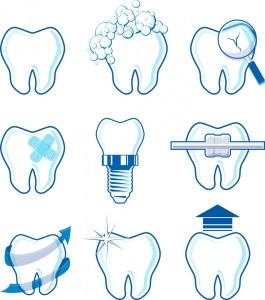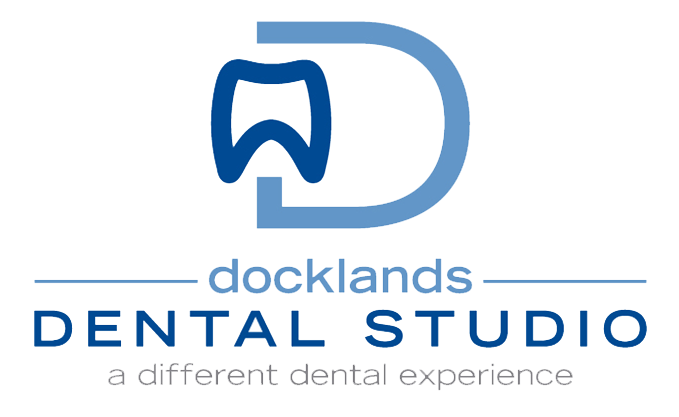Most of us are pretty knowledgeable when it comes to our oral health. We know what foods are the worst for contributing to cavities and we know what our daily oral health routine should include. Despite knowing the basics, you might be surprised by some of the common misperceptions we frequently encounter. Here are ten of the most common myths we would like to dispel.
Contact Docklands Dental Studio at (03) 9021 9487 to learn more about oral health. Or visit our office, which is conveniently located in the Victoria Harbour Precinct in Docklands, Melbourne. It is easy to get to us from Southbank via car (through the city or M1, folllowed by Wurundjeri Way) or by foot (a 20 minute walk).

Myth: You Can’t Brush Your Teeth Too Much
Over-brushing is indeed possible! Among the worst outcomes of over-brushing your teeth is gum recession. If you routinely brush your teeth three or more times a day, you could be abrading your gum tissue (and enamel), especially if you use a brush with “medium” or hard bristles. Gum recession exposes tooth roots and leads to that “long in the tooth” look associated with gum disease and aging. It’s more than a cosmetic concern; roots possess no protective enamel and are therefore more vulnerable to decay and staining than the visible part of the tooth (the crown).
Myth: You Should Brush Your Teeth After Every Meal
Our bodies have a natural process for neutralizing acids and removing particles of food—it’s called saliva. After you eat, especially with acidic foods, it’s always best to give your mouth an hour to do its work. Brushing too soon after eating can actually rub the acids deeper into your enamel and lead to demineralization. Taking small sips of water and chewing sugarless gum are great ways to boost saliva production until it’s safe to brush.
Myth: Teeth Don’t Crack Easily
It’s not just rogue nut shells and rocks that can crack a tooth. Ice, almonds, and other hard/crunchy foods are perfectly capable of creating cracks in your enamel. Sometimes these start as micro-cracks that are only noticeable when your tooth becomes sensitive to hot and cold drinks. If you love crunchy snacks and have temperature sensitivity, you may have cracked tooth syndrome.
Myth: Teeth are Fixed
We think of our tooth alignment as fixed, but, as the field of orthodontia proves, it actually takes very little constant pressure to shift a tooth’s position. That’s why children who suck their thumbs may end up buck-toothed. For adults, this means that any repeated contact our teeth have with non-food items may actually affect your alignment and contribute to a crooked smile. For example, if you frequently hold pens, hair clips, or a pipe with your teeth, you may be slowly changing the position of your teeth.
Myth: Teeth are Naturally White
In the modern world, virtually every culture has decided that white teeth are a necessary standard of beauty. Just about every Hollywood movie or popular TV program shows nothing but the pearliest of whites. But the truth is that tooth enamel is actually a pale yellow hue, with only slight variations caused by genetic factors. Teeth naturally hold onto pigments from the food and drinks we consume, and thus become more stained as the years pass. Younger teeth are naturally lighter in colour, so it’s no surprise that a more youthful look is preferred over a natural one. In recent decades, whitening products have become so popular that more and more people can lighten their teeth easily when brushing or with convenient trays and strips. As whitening has become standard, we tend to expect teeth to be white—even though nature did not make them this way.
Myth: Crooked Teeth are Only A Cosmetic Problem
The real problem with crooked teeth is that the areas where teeth overlap can be incredibly hard to keep clean, both on the enamel and under the gum line. This means you are more likely to develop tartar in those spots—and, eventually, cavities and/or gum disease. Additionally, a misaligned bite (overbite, under bite, for example) can put too much stress on certain molars and wear them down unevenly. They can also lead to tension in the jaw, bruxism, and TMJ disorder.
If your teeth are crowded, there are ways to prevent these problems other than orthodontics. Ask your dentist to explain how you can avoid the common problems of crooked teeth without having to wear braces.
Myth: Candy is the Worst Food for Your Teeth
It’s true that candy is not great for your teeth, but starchy foods can be worse. Watch out especially for those with a high glycemic index, which convert quickly to sugars. White bread and potato chips are two of the worst foods to leave residue on your teeth for long periods of time. If you regularly consume starchy foods, especially wheat- or potato-based foods, you may want to rearrange your brushing schedule to allow you to clean your teeth about an hour after eating.
Myth: Baby Teeth are “Disposable”
Yes, baby teeth fall out, but that doesn’t mean they aren’t important. The transition from baby teeth to adult teeth is a complex process that lasts approximately 6 years, start to finish. If teeth must be extracted early due to decay, it can upset the timing of each stage of adult tooth development and lead to alignment problems. Additionally, children need those baby teeth for proper speaking and nutrition.
You should ideally bring children to the dentist as soon as they have teeth, but no later than the 3rd birthday. Starting good oral hygiene habits at a young age is not only good for your child, it’s also good for the adult he or she will become.
Myth: You should let your bleeding gums heal before you floss again.
I know—it seems counterintuitive to floss even when your gums bleed. Usually when a part of your body is sore and bleeding, you want to leave it alone so it can heal itself. The problem with bleeding gums is that the source of the problem is actually bacteria, and you can’t remove that source unless you floss your teeth regularly.
If you haven’t been flossing every day, bacterial growth under the gum line can easily make gums tender enough to bleed when you do floss. When this happens to you, take the two week challenge. Floss every day for two weeks. Ignore the bleeding. In most cases, your gums will be bleeding less in that time period, and in many cases it will stop entirely.
Myth: Whitening Strips the Enamel Off Your Teeth
While it’s true that overuse of whitening products can harm your enamel, this can be avoided by following recommended practices. Constant use of hydrogen peroxide can demineralize enamel faster than fluoride and your natural processes can remineralize it. Only whiten on the time frame recommended by your dentist, or on package directions. As dentists, we would never recommend or provide products that harm your teeth.
Do you want to learn more about the myths surrounding oral health? Contact Docklands Dental Studio at (03) 9021 9487 or visit our office, which is conveniently located in the Victoria Harbour Precinct in Docklands, Melbourne. It is easy to get to us from Southbank via car (through the city or M1, followed by Wurundjeri Way) or by foot (a 20 minute walk).
Also published on Medium.
